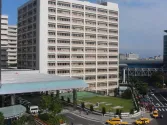APAC labour participation rate continues to decline
Socio-economic progress and education are the key drivers.
Persistent decline in labour force participation rates was observed in Asia-Pacific despite the ongoing economic growth across the region.
Ken Chamuva Shawa, Senior Economist and Head of the Regional Economic and Socio-analysis Unit at the International Labour Organization (ILO) Asia and the Pacific, said that socio-economic progress and education are the key drivers behind falling labour force participation rates, with implications for future labour market dynamics.
According to Shawa, this trend, observed from 66.4% in 2000 to an anticipated 60.4% in 2025, is primarily due to socio-economic advancements and higher education enrollments in low and middle-income economies.
"When the economic situation is not good...people cannot afford not to work, and therefore, labour participation rates increase. But in times when there is poverty decline, in times when we have good education enrollments, labour force participation rates tend to decrease,” he explained.
This phenomenon underscores the impact of economic development on labour markets, suggesting that as economies evolve, so too does the nature of workforce engagement.
Shawa noted a significant heterogeneity in labour force participation rates, emphasising Southeast Asia and South Asia as areas of particular interest, with the latter expecting an increase in women's labour force participation—a development Shawa marks as a significant milestone.
Looking forward to 2024, Shawa outlined several key labour market trends expected to shape the region. Employment growth is on the rise, particularly in South Asia, with a 2.4% increase noted between 2022 and 2023, significantly outpacing the global average.
“I think another important issue is that we see employment-professional ratio, which is now 58.2%, very close to the long run ratio, then lower on average ratio. And again, that tells us that employment growth is keeping pace with professional growth. And that's really, really important,” he discussed.
He cited that the region is under threat, including a steady unemployment rate of 4.5%, a high incidence of youth not engaged in employment, education, or training, and pervasive informal employment, especially in low and middle-income countries.
“We see these rates really relatively higher. In South Asia, I can also talk about informality… We see the region has 6%, or if you like, 1.3 billion people in informal employment, and this will not change tomorrow,” he said.
Shawa also pointed to the emergence of new work arrangements in high-income countries of the region, which, while offering flexibility and potential income benefits, lack job security and fall outside the scope of employment legislation.
"These would be the ones that I think will be important labour market issues that we're going to grapple with," Shawa remarked, highlighting the complexity of transitioning labour markets in the Asia-Pacific.



















 Advertise
Advertise








Commentary
Fees friction is testing Asia’s academic ambitions
Turning the tide on friendly fraud as Asia’s payments surge